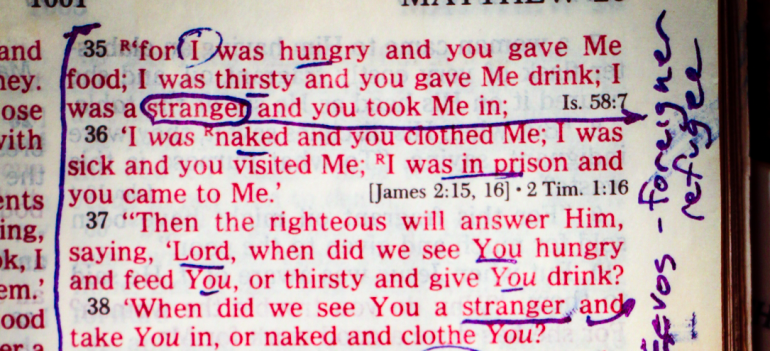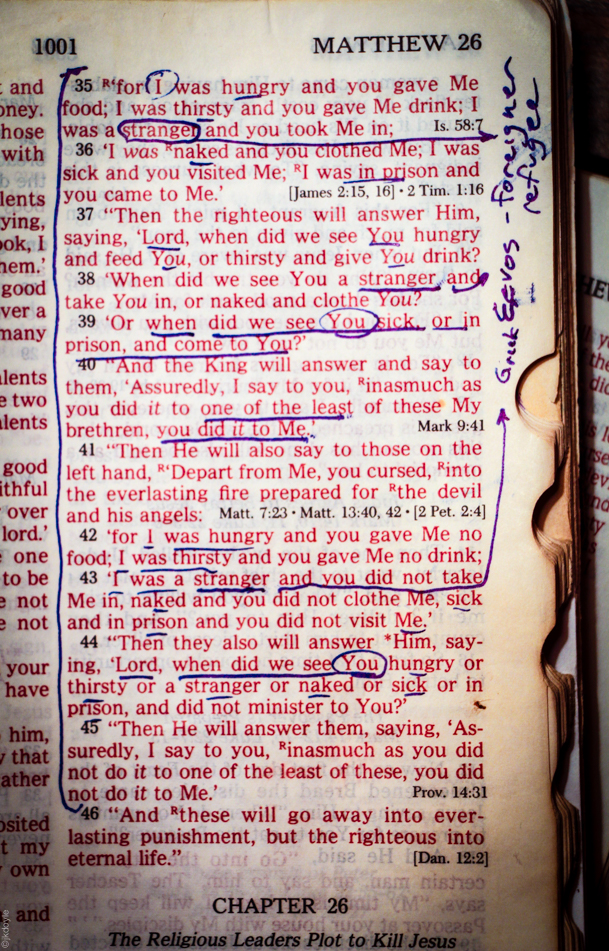The story told by Jesus in Matthew 25:31-46 begins with this introduction:
“When the Son of Man comes in his glory, and all the angels with him, then he will sit on his glorious throne. Before him will be gathered all the nations and he will separate them one from another, as a shepherd separates the sheep from the goats.” (Matthew 25.31–32)
What is often overlooked in this well known passage from the Gospel of Matthew is that it is a depiction of the judgement and subsequent grouping of peoples, “all the nations”, on how they responded to Son of Man.1 Every aspect of action and response by those among the sheep or the goats in this story is in the plural (“when did we see you”). This isn’t only about how individuals responded.
In the story, the Son of Man is also assumed to be the King, who directly ties His own identity to the hungry, the thirsty, foreigners, the naked, the prisoners, and the sick. Those “nations” who provided aid and shelter to persons among these are called “righteous” and “well spoken of by My Father, and they inherit the kingdom of God (v.34). Those who did not provide aid are sent to the punishment of “eternal fire” intended for the Devil, the Diabolical One, and his messengers (v. 41).

